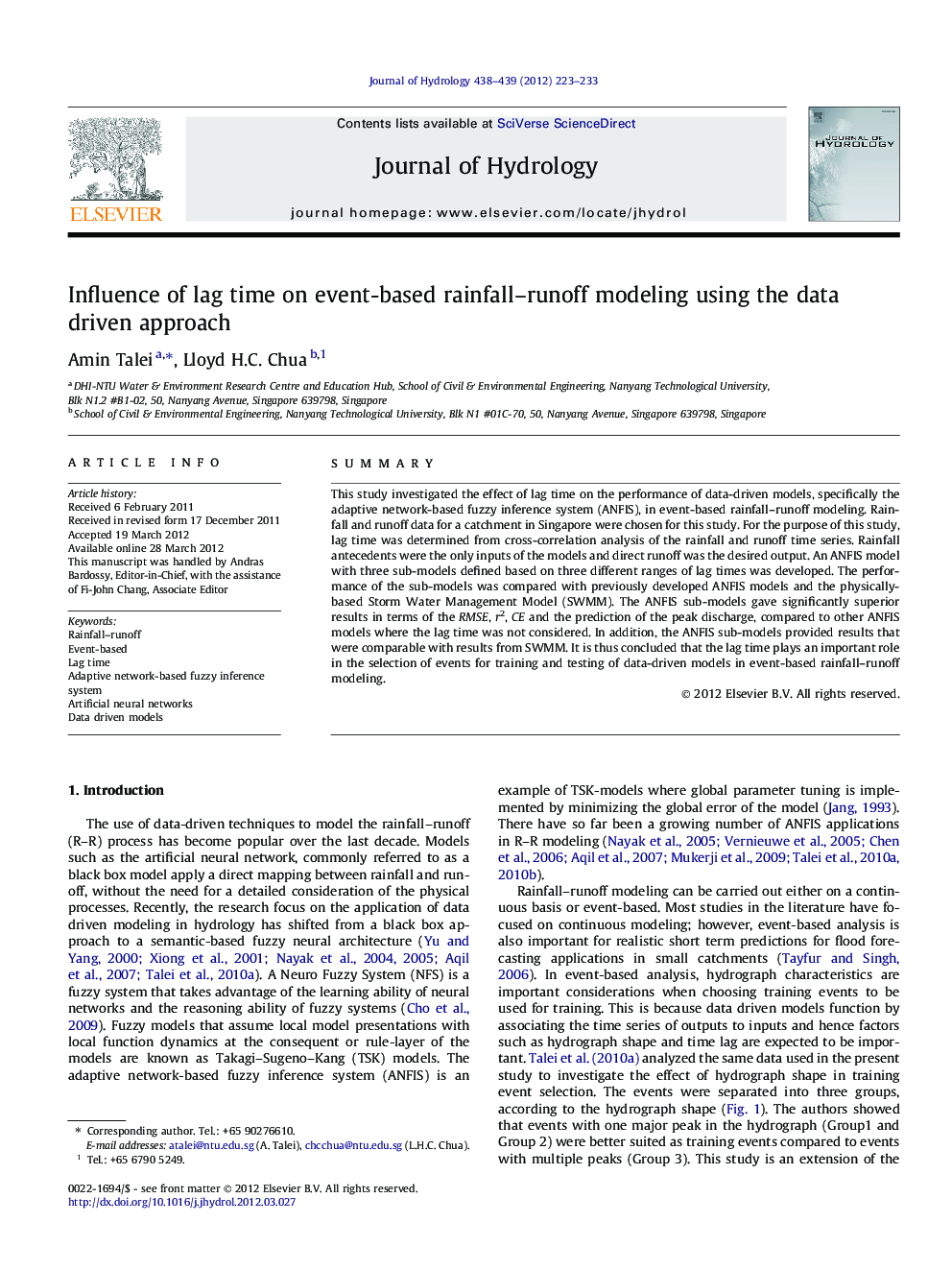| کد مقاله | کد نشریه | سال انتشار | مقاله انگلیسی | نسخه تمام متن |
|---|---|---|---|---|
| 6414036 | 1629992 | 2012 | 11 صفحه PDF | دانلود رایگان |

SummaryThis study investigated the effect of lag time on the performance of data-driven models, specifically the adaptive network-based fuzzy inference system (ANFIS), in event-based rainfall-runoff modeling. Rainfall and runoff data for a catchment in Singapore were chosen for this study. For the purpose of this study, lag time was determined from cross-correlation analysis of the rainfall and runoff time series. Rainfall antecedents were the only inputs of the models and direct runoff was the desired output. An ANFIS model with three sub-models defined based on three different ranges of lag times was developed. The performance of the sub-models was compared with previously developed ANFIS models and the physically-based Storm Water Management Model (SWMM). The ANFIS sub-models gave significantly superior results in terms of the RMSE, r2, CE and the prediction of the peak discharge, compared to other ANFIS models where the lag time was not considered. In addition, the ANFIS sub-models provided results that were comparable with results from SWMM. It is thus concluded that the lag time plays an important role in the selection of events for training and testing of data-driven models in event-based rainfall-runoff modeling.
⺠We investigate the effect of lag time on performance of ANFIS model in R-R modeling. ⺠Lag time was found to be a significant factor in the choice of training-testing events. ⺠Results were the best when events used for training and testing had the same lag times. ⺠Performance deteriorated as the lag time between training and testing events increased. ⺠ANFIS model developed based on lag time showed improvement compared to other models.
Journal: Journal of Hydrology - Volumes 438â439, 17 May 2012, Pages 223-233